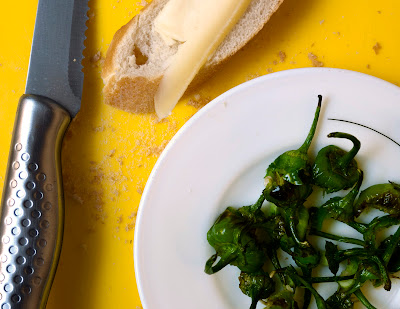Dear Michelle,
Happy Thanksgiving! This could easily be called, “What to Do with Your Turkey When You Don’t Want to Eat Turkey any More”. I love Thanksgiving, it might be my favorite holiday; I cherish the traditions, time with friends and family (my cousin James joined us this year!), and of course the food. The thing is, I’m not really the biggest fan of turkey. Sure, I’ll eat it, but when it comes time for seconds I’d rather have stuffing and mashed potatoes drenched in gravy, and some green beans for good measure. Any room that extra turkey would have stuffed into would be better filled by pumpkin pie.
Nor am I the only person in my family who feels this way; my father complains about the very existence of the turkey every year. Traditionally I like leftover turkey sandwiches in the days following the holiday, but this morning as I stood at the counter and stripped that poor bird’s carcass of everything edible before throwing the rest into a stockpot, I thought I’d try something a little different with the seemingly enormous amount of meat I scavenged, and make a turkey salad.
The secret ingredient in the dressing for this is my Aunt Lynaire’s curried apricot ketchup. Really, it’s Food and Wine’s recipe, but it came to me via my aunt, whom I’ve already mentioned is an extraordinary cook. I made my first batch of this on a whim several months ago, and again recently, and then again last night for my parents, to go with sweet potato fries. This stuff is really good, and pretty easy. Melted onions, dried apricots, and chopped ginger and tomato simmer in cider vinegar, water, and brown sugar, then puree to a sweet, sour, delectable sauce.
So I had a bunch of this stuff in the fridge, and I figured I might as well use it instead of starting from scratch. Jeff has a visceral aversion to mayonnaise, so I made two versions of the dressing, one with mayo and the other with sour cream. When I was trying to tell him which was which I couldn’t really tell the difference, so in this case I think the two are interchangeable. They both tasted really good!
Everybody liked the salad, but the best recommendation comes from He Who Groans at the Sight of Turkey, who said that if I did the same to the rest of the fowl leftovers, he would eat it all with pleasure.
Curried Turkey Salad
This would be just as good with chicken, and I’m sure very good with pork loin. Terrific in a sandwich with lettuce and cranberry sauce. Unless you know how hot your curry is, add in small increments and taste, or you might get a spicy-hot surprise. If you don't want to go to the effort of making the ketchup, try improvising with vinegar, store-bought ketchup, apricot jam, ginger and garlic- mix together until it tastes good, and add to mayo.
4 c chopped cooked turkey
1 1/2 c diced celery
1 1/2 c dried cranberries
1 1/2 c dried cranberries
1 c toasted pecan pieces
1 c curried apricot ketchup
1 c mayonnaise or sour cream
1-2 T curry powder
3 T chopped parsley
3 T chopped parsley
Mix wet ingredients with curry. Add turkey, etc. and mix. My family tends to like things on the condiment-heavy side; you might want to start with a little less than all of the sauce and then add more if you find it necessary.
Curried Apricot Ketchup, verbatim from my Aunt's recipe
Worth making just to have in the fridge. I’ve so far used it on fries, burgers, and hot dogs, but I’m willing to bet that I’ve only scratched the surface of its usefulness; I’m eager to try it on pork, potatoes, cauliflower- I could go on. I used an immersion blender instead of a standing blender, and it worked just fine.
1 t vegetable oil
1/2 c chopped onion
1 t finely grated ginger
1 garlic clove, diced or grated
1 t finely grated ginger
1 garlic clove, diced or grated
1/2 c chopped dried apricots
1 large tomato, peeled, seeded, and chopped
1/2 c apple cider vinegar
1/2 c water
1/2 c sugar (I used brown sugar)
1 t Madras curry powder (see above!)
salt
In a medium saucepan, heat vegetable oil. Add the onion, ginger and garlic and cook over low heat, stirring occasionally, until softened, about 10 minutes. Stir in apricots, tomato, cider vinegar, water, sugar and curry powder. Simmer over moderately low heat until the apricots are soft, about 15 minutes. Scrape the contents of the saucepan into a blender and puree until smooth. Season the ketchup with salt and transfer to a bowl. Refrigerate until cool, about 20 minutes. Serve at room temperature or chilled.
The ketchup can be refrigerated for up to 2 weeks.
The ketchup can be refrigerated for up to 2 weeks.



























